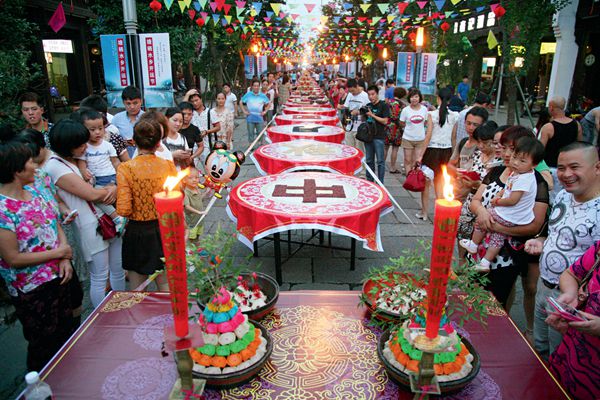Customs around the Mid-Autumn Festival
China Today, September 6, 2016 Adjust font size:
Origins
Mid-Autumn Day, as the name suggests, usually falls in late September. As the full moon implies family reunions, it is also called the “reunion festival.”
The Chinese people’s tradition of worshiping the moon and offering sacrifices to it can be traced back more than 2,000 years. The Mid-Autumn Festival also happens to be a harvest season. To show their gratitude to Heaven for a good harvest, Chinese ancients held celebratory activities around this day. At this time of year, it’s cool, but not yet cold. Clear skies and crisp air make it a good time to enjoy the beauty of the full moon. Hence, later, celebrations of the festival laid greater emphasis on enjoying the moon rather than making sacrifices, as new connotations became attached to it.
Ancient customs, rites, myths, legends and other factors of traditional Chinese culture have combined to imbue the Mid-Autumn Festival with rich content and cultural connotations in its evolution. The most famous legends told around the festival are fairy tales about the Moon Palace, relating to such figures as the Moon Goddess, and Tang Dynasty Emperor Li Longji (685-762) and his concubine Yang Yuhuan.

Local residents uphold the venerable tradition of a street feast in ancient Tangqi Town, Hangzhou, East China’s Zhejiang Province, to pray for blessings from the Moon Goddess.
In the seventh century, the Mid-Autumn became an established festival as related celebrations of a bright full moon and feasting became prevalent. In the 10th century, the mooncake, a special dessert for the day, made an appearance, and the festival became even more popular as the accompanying celebrations evolved. By the 14th century, its importance was second only to that of the Spring Festival.
At Mid-Autumn Festival, a memorial tablet to the Moon Goddess is set up in each household with fruits, melons and mooncakes placed in front of it as a sacrifice. The cake must be round and melons and fruits cut into lotus-petal-shaped pieces. Some people also buy joss paper with images of the Goddess and patterns like the Jade Rabbit making heavenly medicine printed on it. After the moon-worshipping ceremony, people burn the joss paper and family members share the fruits and moon cakes. At the festival of family reunion, people give each other mooncakes as gifts to express their good wishes.
Apart from the common traditions, different regions also have their unique customs and celebrations on this day. For people in East China’s Zhejiang Province, tidal bore watching is an important event on this day when the Earth is at its almost closest position to the Sun, when the most spectacular tides are formed in the Qiantang River. Its turbulent waves can sometimes reach several meters in height, overwhelming everything in their way, like herds of stampeding horses.